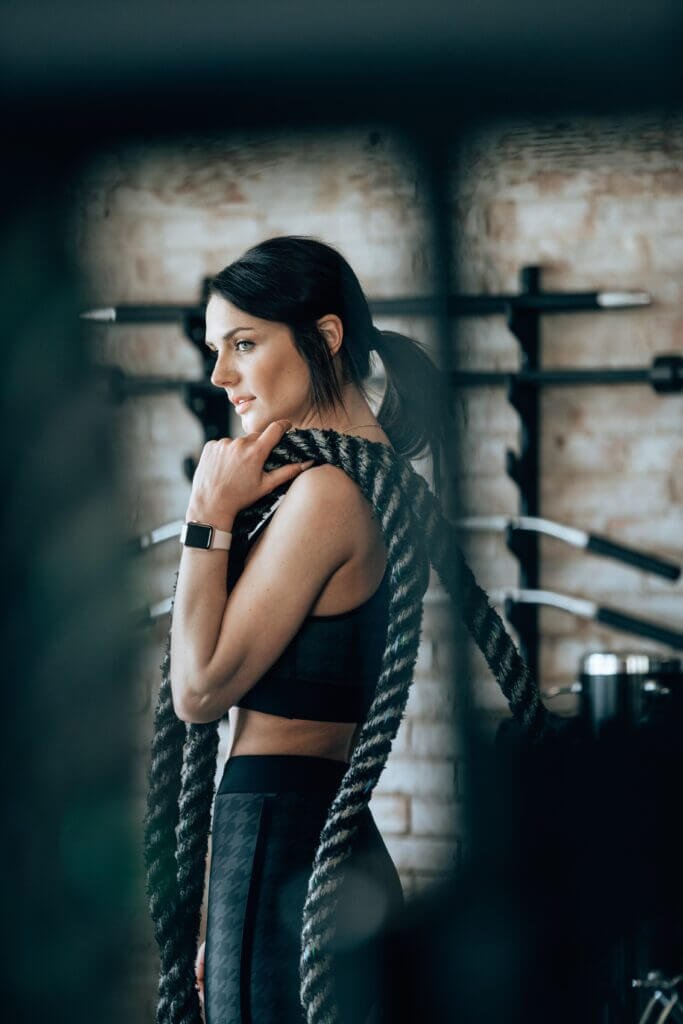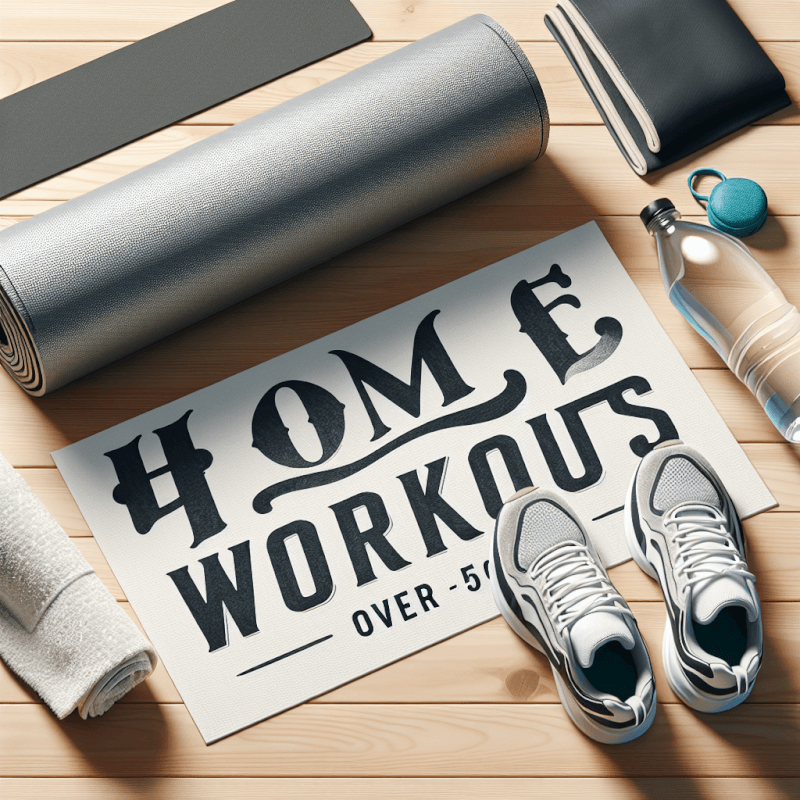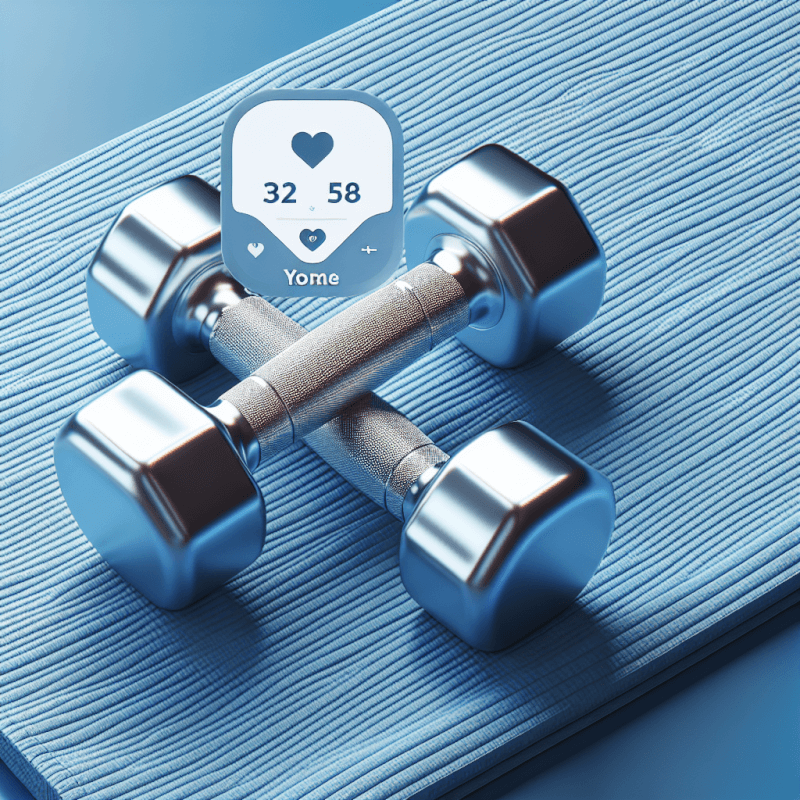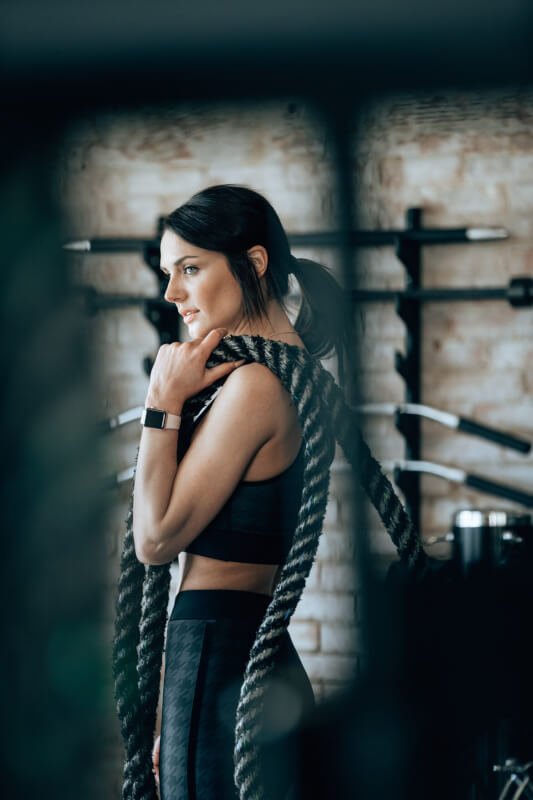Are you over 50 and looking for effective home workouts? Look no further! In this article, we will explore a range of fitness routines specifically designed for individuals in their golden years. Whether you’re a beginner or an experienced fitness enthusiast, these home workouts will help you stay active, increase strength, and improve your overall well-being. Get ready to sweat and have fun as we dive into the world of home workouts for individuals over 50!
Benefits of Home Workouts for Over 50
Improves overall fitness
Engaging in regular home workouts can greatly improve your overall fitness, especially if you are over 50. Whether you are a beginner or have been active throughout your life, home workouts provide a convenient way to stay fit and maintain a healthy lifestyle. With consistent exercise, you can enhance your cardiovascular health, strengthen your muscles, and improve your endurance. Regular physical activity also helps to increase energy levels, boost metabolism, and contribute to maintaining a healthy weight. By incorporating various types of exercises into your routine, you can work on different aspects of fitness and achieve a well-rounded level of physical well-being.
Reduces the risk of chronic diseases
As you age, the risk of developing chronic diseases such as heart disease, diabetes, and certain types of cancer increases. However, engaging in regular home workouts can significantly reduce the risk of these diseases. Physical activity helps to improve blood circulation, lower blood pressure, and reduce cholesterol levels, thus promoting heart health. Additionally, exercise plays a crucial role in regulating blood sugar levels and maintaining a healthy weight, which are both important factors in managing and preventing diabetes. By consistently incorporating home workouts into your routine, you are taking proactive steps towards reducing the risk of chronic diseases and improving your long-term health.
Enhances mobility and flexibility
Maintaining good mobility and flexibility is essential as you age, as it allows you to perform daily activities with ease and reduces the risk of injuries. Home workouts can help enhance your mobility and flexibility by incorporating exercises that specifically target these areas. Performing stretching routines and practicing activities such as yoga and Pilates can improve joint flexibility, increase range of motion, and help prevent stiffness and joint pain. Regular exercise also helps to strengthen muscles, which supports joint stability and reduces the risk of falls and injuries. By including mobility and flexibility exercises in your home workouts, you can maintain an active and independent lifestyle as you age.
Boosts mental health
Engaging in home workouts not only benefits your physical health but also has a positive impact on your mental well-being. Exercise has been shown to release endorphins, which are hormones that promote feelings of happiness and reduce stress levels. Regular physical activity can help reduce symptoms of anxiety and depression, improve mood, and enhance cognitive function. Additionally, home workouts provide a sense of accomplishment and empowerment, boosting self-esteem and confidence. By incorporating exercise into your daily routine, you can experience improved mental clarity, increased self-confidence, and a greater overall sense of well-being.
Promotes better sleep
Many individuals over the age of 50 struggle with sleep disruptions and insomnia. However, incorporating regular home workouts into your routine can help promote better sleep. Exercise has been proven to regulate sleep patterns and improve sleep quality. Physical activity increases the production of serotonin, a neurotransmitter that helps regulate sleep, and reduces the levels of cortisol, a hormone associated with stress. By engaging in home workouts, you can experience more restful and rejuvenating sleep, allowing you to wake up feeling refreshed and energized each day.
Factors to Consider Before Starting Home Workouts
Talk to your doctor
Before starting any new exercise program, it is important to consult with your doctor, especially if you are over 50 or have any existing health conditions. Your doctor can assess your current health status and provide valuable guidance on how to approach and modify your home workouts to suit your individual needs. They may also recommend specific exercises or precautions based on your medical history or any potential limitations. By consulting with your doctor, you can ensure that you embark on a safe and effective home workout journey.
Set realistic goals
When starting home workouts, it is crucial to set realistic goals that align with your current fitness level and abilities. Setting achievable goals helps to keep you motivated and prevents discouragement. Consider what you hope to achieve through your home workouts, whether it’s increasing strength, losing weight, or improving overall fitness. Break down your goals into smaller milestones and track your progress along the way. Remember, patience is key, and gradual progress is more sustainable and beneficial in the long run.
Consider physical limitations
It is important to consider your physical limitations before starting home workouts. Take into account any previous injuries, joint issues, or other conditions that may impact your exercise routine. Certain exercises may need to be modified or avoided altogether to prevent further injury or discomfort. Consult with a fitness professional or physical therapist if necessary, to ensure that the exercises you choose are safe and suitable for your specific situation. By being aware of your physical limitations, you can tailor your home workouts to optimize your overall well-being.
Choose appropriate workout equipment
Depending on the types of home workouts you plan to engage in, it may be necessary to invest in some basic workout equipment. Consider the exercises you will be performing and the goals you have set for yourself. Equipment such as resistance bands, dumbbells, exercise balls, or a yoga mat can greatly enhance the effectiveness of your workouts. However, it’s important to choose equipment that suits your fitness level and abilities. Start with lighter weights or lower resistance and gradually increase as your strength and endurance improve. Additionally, ensure that your workout equipment is properly maintained and in good working condition to avoid any accidents or injuries.
Create a workout schedule
To ensure consistency and to make your home workouts a regular part of your routine, it is helpful to create a workout schedule. Determine the best time of day for you to exercise, considering factors such as energy levels, other commitments, and personal preferences. Aim for at least three to five days of exercise per week, with rest days in between to allow for recovery. Schedule your workouts in advance and treat them as important appointments that you cannot miss. By having a structured schedule, you are more likely to stick to your home workouts and reap the benefits.

Types of Home Workouts for Over 50
Cardiovascular exercises
Cardiovascular exercises, also known as aerobic exercises, are essential for maintaining a healthy heart and overall fitness. These exercises increase your heart rate and breathing rate, leading to improved cardiovascular endurance and circulation. There are several options for cardiovascular exercises that can be easily done at home. These include brisk walking, cycling on a stationary bike, swimming, dancing, and engaging in aerobic workout videos or classes. Choose activities that you enjoy and that are within your physical capabilities to make your home cardiovascular workouts both effective and enjoyable.
Strength training
Strength training exercises are crucial for maintaining muscle mass, bone density, and overall strength as you age. Including strength training in your home workouts can help prevent age-related muscle loss and reduce the risk of osteoporosis and fractures. Bodyweight exercises, such as squats, lunges, push-ups, and planks, are effective for building strength without the need for equipment. Resistance bands, dumbbells, and weight machines can also be used for added resistance and variety in your strength training routine. Consider incorporating yoga and Pilates, which focus on using bodyweight and controlled movements to build strength and flexibility simultaneously.
Balance exercises
Maintaining good balance is essential for preventing falls and maintaining independence as you age. Balance exercises can help improve stability and coordination, reducing the risk of accidents and injuries. Tai Chi, a gentle martial art that emphasizes slow, controlled movements, is an excellent choice for improving both balance and overall body awareness. Other balance exercises that can be done at home include single-leg stands, heel-to-toe walks, leg swings, and chair yoga. Incorporating balance exercises into your home workouts can greatly enhance your overall physical well-being and confidence in performing daily activities.
Stretching routines
Stretching is an essential component of any home workout routine, as it helps improve flexibility, prevent muscle imbalances, and reduce the risk of injuries. Incorporating stretching routines into your home workouts can help alleviate muscle stiffness, improve posture, and enhance joint mobility. Focus on stretching all major muscle groups, including the neck, shoulders, hamstrings, calves, and quadriceps. Include both static stretches, where you hold a stretch for a short period, and dynamic stretches, where you incorporate movement into your stretches. By regularly performing stretching routines, you can maintain or improve your flexibility and overall physical function.
Low-impact workouts
Low-impact workouts are ideal for individuals over 50 as they minimize stress on the joints while still providing cardiovascular and muscular benefits. These workouts are gentle on the body, making them suitable for those with joint issues or physical limitations. Water aerobics, performed in a pool, is an excellent low-impact exercise that provides resistance and supports the body. Elliptical training, which mimics the motion of walking or running without the impact, is another effective low-impact option. Stationary biking and modified exercises that avoid excessive jumping or twisting motions are also suitable for low-impact home workouts.
Cardiovascular Exercises for Over 50
Brisk walking
One of the simplest and most accessible cardiovascular exercises for individuals over 50 is brisk walking. It requires no equipment and can be done almost anywhere. Brisk walking increases your heart rate, improves circulation, and strengthens your leg muscles. Start with a comfortable pace and gradually increase your speed as your fitness level improves. Aim for at least 30 minutes of brisk walking most days of the week to gain cardiovascular benefits.
Cycling
Cycling is a low-impact cardiovascular exercise that can be done indoors on a stationary bike or outdoors on a regular bike. It strengthens the lower body muscles, including the quadriceps, hamstrings, and calves, while also improving cardiovascular endurance. Adjust the resistance or choose different terrains to challenge yourself and increase the intensity of your workout. Cycling for 30 minutes or more, several times a week, can help improve your overall fitness level.
Swimming
Swimming is a highly recommended cardiovascular exercise for individuals over 50 as it is gentle on the joints and provides a full-body workout. It engages both the upper and lower body muscles, promotes cardiovascular health, and improves lung capacity. Whether you swim laps or participate in water aerobics classes, swimming offers a low-impact yet effective way to improve your overall fitness. Aim for at least 150 minutes of moderate-intensity swimming per week to reap the benefits.
Dancing
Dancing is a fun and enjoyable cardiovascular exercise that can be easily incorporated into your home workouts. Whether you follow dance workout videos or simply let loose to your favorite music, dancing gets your heart rate up, increases endurance, and improves coordination. It provides a full-body workout and can be tailored to your fitness level and preferences. Dancing for 30 minutes or more, several times a week, can improve your cardiovascular fitness and bring joy to your home workouts.
Aerobic workouts
Aerobic workouts, such as aerobics classes or following aerobic exercise videos, are popular for individuals over 50 looking to improve their cardiovascular fitness. These workouts typically involve dynamic movements, such as jumping jacks, high knees, and kicking exercises, to elevate the heart rate and challenge the cardiovascular system. Many online platforms offer a wide variety of aerobic workout videos suitable for different fitness levels. Aim for at least 30 minutes of moderate-intensity aerobic exercise most days of the week to improve your cardiovascular health.

Strength Training Exercises for Over 50
Bodyweight exercises
Bodyweight exercises are an excellent option for individuals over 50 who want to build strength without the need for equipment. Squats, lunges, push-ups, planks, and modified versions of these exercises can be done anywhere and require only your bodyweight. These exercises target multiple muscle groups simultaneously, helping to build overall strength and muscular endurance. Start with variations that suit your current fitness level and gradually progress to more challenging versions as your strength improves.
Resistance band workouts
Resistance bands are affordable and versatile tools that can easily be incorporated into your home workouts. They come in various resistance levels, allowing you to adjust the intensity of your exercises. Resistance band workouts target specific muscle groups and can enhance the effectiveness of your strength training routine. Use bands for exercises such as bicep curls, tricep extensions, lateral raises, and rows. Include both upper and lower body exercises to achieve a balanced strength training program.
Dumbbell exercises
Dumbbells are another popular choice for home strength training workouts. They provide added resistance and flexibility in terms of exercise options. Dumbbell exercises can target specific muscle groups or engage multiple muscles simultaneously. Perform exercises such as bicep curls, shoulder presses, squats, deadlifts, and chest presses using dumbbells. Start with lighter weights and gradually increase as your strength and endurance improve. Proper form and technique are crucial when using dumbbells to prevent injuries and maximize results.
Yoga
Yoga is a holistic practice that combines physical postures, breath control, and meditation. It can be an excellent addition to your home workouts for individuals over 50. Yoga helps improve flexibility, strength, balance, and body awareness. Many yoga classes and resources are specifically designed for older adults or beginners. Look for gentle or senior-focused yoga routines that include modifications for different fitness levels. By consistently practicing yoga, you can enhance your overall physical and mental well-being.
Pilates
Pilates is a low-impact exercise method that focuses on core strength, flexibility, and body awareness. It can be done using a mat or with the assistance of specific equipment such as Pilates reformers or resistance bands. Pilates exercises target the deep muscles of the core, as well as the muscles of the back, hips, and shoulders. They help improve posture, build strength, and enhance overall body alignment. Consider taking online Pilates classes or following along with guided Pilates workouts to incorporate this effective strength training method into your home workouts.
Balance Exercises for Over 50
Tai Chi
Tai Chi is an ancient Chinese martial art that combines slow, flowing movements with deep breathing and mindfulness. It focuses on improving balance, coordination, and body awareness. Tai Chi is gentle on the joints and can be easily incorporated into home workouts for individuals over 50. The slow and controlled movements promote stability, flexibility, and an overall sense of well-being. Look for Tai Chi instructional videos or classes specifically designed for older adults to get started.
Single-leg stands
Single-leg stands are simple yet effective balance exercises that can be done anywhere, even as part of your daily routine. Stand near a chair or wall for support if needed and lift one foot off the ground. Try to balance on one leg for as long as possible, gradually increasing the duration as you gain strength and stability. Switch sides and repeat. Single-leg stands help improve proprioception, strengthen the leg muscles, and enhance balance and coordination.
Heel-to-toe walk
The heel-to-toe walk, also known as the tandem walk, is a balance exercise that challenges your coordination and posture. Clear a path in your home and practice walking in a straight line with one foot placed directly in front of the other, heel to toe. Keep your gaze forward and engage your core for stability. Start with shorter distances and gradually increase as you become more confident and comfortable. The heel-to-toe walk is an effective exercise for improving balance and control.
Leg swings
Leg swings are dynamic balance exercises that target the muscles around the hip joint and improve hip stability. Stand next to a wall or chair for support and swing one leg forward and backward in a controlled manner, allowing it to swing freely. Repeat on the other leg. Gradually increase the range of motion and speed as you feel more comfortable. Leg swings help improve balance, hip mobility, and leg strength, making them a beneficial addition to your home workouts.
Chair yoga
Chair yoga is a modified form of traditional yoga that can be done while seated or using a chair for support. It is a safe and effective option for individuals over 50 who have limited mobility or difficulty with balance. Chair yoga incorporates gentle stretches, breathing exercises, and easy-to-follow movements to improve strength, flexibility, and balance. Look for online resources or DVDs specifically designed for chair yoga and follow along with guided routines to experience the benefits of this accessible exercise.

Stretching Routines for Over 50
Neck stretches
Neck stretches can help alleviate muscle tension and promote flexibility in the neck and upper back. Sit or stand with your spine tall and gently tilt your head to one side, bringing your ear towards your shoulder. Hold the stretch for 15 to 30 seconds, feeling a gentle stretch along the side of your neck. Repeat on the other side. You can also incorporate other neck stretches, such as chin tucks and head turns, to target different muscles and improve range of motion.
Shoulder stretches
Shoulder stretches can help relieve tightness and improve flexibility in the shoulders and upper back. Stand tall and extend one arm across your chest, using your other arm to gently pull it closer to your body. Hold the stretch for 15 to 30 seconds, feeling a gentle stretch in the back of your shoulder. Repeat on the other side. You can also perform shoulder rotations, arm circles, and other stretches to target different areas of the shoulder complex and enhance overall range of motion.
Hamstring stretches
Hamstring stretches are important for maintaining flexibility in the back of the thighs and improving lower body mobility. Sit on the edge of a chair or on the floor with one leg extended straight in front of you. Reach towards your toes, aiming to keep your back straight and avoiding rounding the spine. Hold the stretch for 15 to 30 seconds, feeling a gentle stretch in the back of your leg. Repeat on the other side. Gradually increase the intensity of the stretch over time by reaching further towards your toes.
Calf stretches
Calf stretches target the muscles in the lower legs and help improve ankle mobility. Stand facing a wall or grab onto a sturdy object for support. Place one foot forward, keeping the heel on the ground and the knee bent. Straighten the back leg and press the heel towards the floor, feeling a gentle stretch in the calf. Hold the stretch for 15 to 30 seconds, then switch sides. Include both standing and seated calf stretches in your routine to improve flexibility in this area.
Quad stretches
Quad stretches are beneficial for improving flexibility in the front of the thighs and maintaining proper leg alignment. Stand tall and grab onto a wall or chair for support if needed. Bend one knee and bring your foot towards your glute, gently pressing your hips forward until you feel a stretch in the front of your thigh. Hold the stretch for 15 to 30 seconds, then switch sides. You can also perform quad stretches while lying on your side or using a chair for support to target different angles of the quadriceps.
By regularly incorporating these stretching routines into your home workouts, you can improve your flexibility, reduce muscle tension, and maintain a greater range of motion.
Low-Impact Workouts for Over 50
Water aerobics
Water aerobics is a low-impact workout that takes place in a pool and provides resistance for a full-body workout. The buoyancy of the water reduces stress on the joints, making it suitable for individuals over 50 or those with joint issues. Water aerobics classes or online videos typically include exercises such as water walking, leg kicks, arm movements, and other aerobic movements performed in the water. The resistance and gentle support of the water make water aerobics an effective and enjoyable low-impact option.
Elliptical training
Elliptical training is a low-impact cardiovascular exercise that mimics the motion of walking or running without the impact on your joints. It engages both the upper and lower body muscles, providing a full-body workout. Many home elliptical machines come equipped with adjustable resistance, allowing you to tailor the intensity of your workout. If you don’t have access to an elliptical machine, you can still perform elliptical-like movements by marching or jogging in place while engaging your arms.
Stationary biking
Stationary biking is a low-impact cardiovascular exercise that can be done from the comfort of your home. It provides a low-stress option for individuals over 50 to engage in regular aerobic activity while minimizing strain on the joints. Stationary bikes often come with adjustable resistance levels, allowing you to tailor the intensity of your workout. Pedal at a comfortable pace and gradually increase the resistance and duration as your fitness level improves. Stationary biking can improve cardiovascular health, leg strength, and endurance.
Modified exercises
Modifying traditional exercises to reduce impact is a great way to make your home workouts more suitable for individuals over 50. For example, instead of traditional jumping jacks, try performing side taps where you step out to the side while keeping one foot on the ground at all times. Replace high-impact moves like burpees with modified versions such as step-ups or modified push-ups instead of full push-ups. By finding and incorporating modified exercises, you can enjoy increased safety and comfort during your low-impact home workouts.
Step workouts
Step workouts are a low-impact option that can be done at home using a step platform. Step platforms are adjustable in height, allowing you to choose the level of intensity that suits your fitness level. Step workouts involve stepping up and down on the platform, often combined with arm movements or choreographed routines. These workouts improve cardiovascular fitness, coordination, and lower body strength. Look for online step workout videos or create your own routine to add variety and fun to your low-impact home workouts.

Tips for a Safe and Effective Home Workout
Warm-up and cool-down properly
Before starting any home workout, it is crucial to warm up your muscles and prepare your body for exercise. Take a few minutes to perform light cardio exercises, such as marching in place or slow jogging, to elevate your heart rate and increase blood flow to your muscles. After your workout, cool down by performing stretches for all major muscle groups to prevent post-exercise muscle soreness and promote muscle recovery. Proper warm-up and cool-down routines are essential for injury prevention and maximizing the benefits of your home workouts.
Start slowly and gradually increase intensity
When starting a new home workout routine, it is important to start slowly and gradually increase the intensity over time. This allows your body to adjust and adapt to the demands of exercise, reducing the risk of injuries. Begin with exercises and movements that are within your current fitness level and gradually progress as you become more comfortable and confident. Listen to your body and take breaks as needed. Remember, consistency and gradual progress are key to long-term success.
Listen to your body
Listening to your body and paying attention to how you feel during and after your home workouts is essential for your overall well-being. If you experience pain or discomfort during an exercise, stop and assess the cause. Modify or avoid movements that aggravate any existing injuries or conditions. It is normal to feel a certain level of muscle soreness after a workout, but excessive pain or joint discomfort could indicate an issue. Be mindful of your body’s limits and adjust your workouts accordingly to ensure a safe and effective experience.
Stay hydrated
Staying hydrated during your home workouts is crucial for maintaining optimal performance and preventing dehydration. Drink water before, during, and after your workouts, especially if you are engaging in cardiovascular exercises or sweating heavily. Keep a water bottle nearby and take regular sips throughout your workout. If you’re not sure about your hydration levels, a good rule of thumb is to monitor the color of your urine – pale yellow or clear urine is an indication of proper hydration.
Use proper form and technique
Using proper form and technique is key to preventing injuries and maximizing the effectiveness of your home workouts. Pay attention to your posture, alignment, and breathing during each exercise. If you are unsure about how to perform a particular exercise correctly, consult instructional videos or seek guidance from a fitness professional. Performing exercises with proper form ensures that you are targeting the intended muscles and reduces the risk of strain or injury. Focus on quality movements rather than speed or quantity in order to achieve the best results.
Creating a Suitable Home Workout Environment
Designate a workout space
Creating a designated workout space in your home can help cultivate a positive and motivating environment for your home workouts. Choose an area that is spacious enough for your exercises and free of clutter. Clear the space of any hazards or obstacles that could potentially cause accidents. Having a dedicated area for your workouts helps to set the mindset for exercise and creates a sense of separation between your workout space and the rest of your home.
Invest in basic exercise equipment
Investing in some basic exercise equipment can enhance the effectiveness and variety of your home workouts. Depending on your fitness goals and preferences, consider purchasing items such as resistance bands, dumbbells, exercise balls, yoga mats, or a step platform. Start with equipment that suits your current fitness level and gradually add more as your needs and abilities evolve. Quality equipment that is suitable for your specific exercises can provide additional resistance and challenge, making your home workouts more engaging.
Ensure good lighting and ventilation
Good lighting and ventilation are important factors in creating a suitable home workout environment. Choose a space that is well-lit, either with natural light or with sufficient artificial lighting. This ensures that you can see your surroundings clearly, reducing the risk of accidents or injuries. Proper ventilation is also crucial to prevent overheating and maintain a comfortable exercise environment. Open windows or use fans to promote air circulation and keep the temperature within a comfortable range.
Make it comfortable and motivating
Making your home workout environment comfortable and motivating is key to promoting consistency and enjoyment in your exercise routine. Use a non-slip exercise mat or carpet padding to provide a cushioned and stable surface for your workouts. Play music that energizes you and helps boost your mood. Hang motivational quotes or pictures that inspire and encourage you on the walls. Create a space that you enjoy spending time in and that makes you feel motivated to engage in your home workouts.
Remove potential hazards
Before starting your home workouts, ensure that the workout area is free of potential hazards. Remove any objects or furniture that could pose a tripping or falling hazard. Keep cords or cables safely organized and out of the way to prevent accidents. If you have pets or small children, create a barrier to keep them separated from your workout space during your exercise sessions. By eliminating potential hazards, you can create a safe and conducive environment for your home workouts.
Establishing a suitable home workout environment is essential for creating a positive and effective exercise routine. A designated workout space, quality equipment, good lighting and ventilation, comfort, and safety should all be considered when setting up your home workouts.
In conclusion, home workouts for individuals over 50 offer numerous benefits. They improve overall fitness, reduce the risk of chronic diseases, enhance mobility and flexibility, boost mental health, and promote better sleep. Before starting home workouts, it is important to consider factors such as talking to your doctor, setting realistic goals, considering physical limitations, choosing appropriate workout equipment, and creating a workout schedule. There are various types of home workouts suitable for individuals over 50, including cardiovascular exercises, strength training, balance exercises, stretching routines, and low-impact workouts. Follow tips for a safe and effective home workout, such as warming up and cooling down properly, starting slowly and gradually increasing intensity, listening to your body, staying hydrated, and using proper form and technique. Creating a suitable home workout environment involves designating a workout space, investing in basic exercise equipment, ensuring good lighting and ventilation, making it comfortable and motivating, and removing potential hazards. By incorporating home workouts into your routine, you can improve your overall health, fitness, and well-being as you age.



